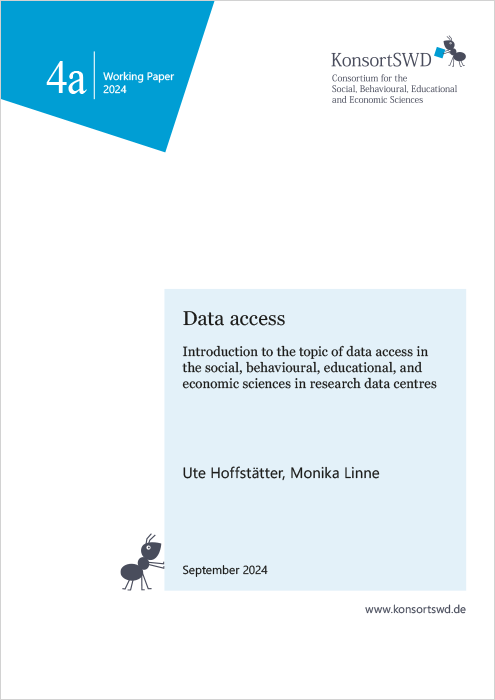Data access

Introduction to the topic of data access in the social, behavioural, educational, and economic sciences in research data centres
Publication details
ABSTRACT
The central task of research data centres (RDCs) is to facilitate access to data for secondary use alongside the archiving of research data and related activities, including data documentation and data curation.[1] This article therefore supplies (prospective) RDCs and other research data infrastructures in the social, behavioural, educational, and economic sciences with essential information on the various options they have to offer data access paths to digital resources. To this end, the various data access paths are presented, which include downloading data, different variants of remote access, and on-site data access, and the properties that go with them as well as services for archiving and publishing. Aspects relevant to choosing a data access path are also highlighted in this context. One aspect includes the costs incurred by the various data access paths. The Five Safes model is utilised to explain the various parameters of data access and to illustrate the interrelation between these parameters.
The article also covers those characteristics of data that determine how open or restricted access to them can be or whether it is necessary to implement anonymisation measures. Data catalogues or research systems help with target group-specific access to data. They can provide information on access authorisations for data using access categories or by allocating standardised metadata.
Moreover, the article at hand points out the legal regulation that needs to be observed. They define which category of persons should be authorised to re-use research data, for which purpose the data may be used, and how this can be monitored. This is where terms of use, licenses, and data use agreements come into play, which, transparently and unambiguously, determine the research data’s possible purposes of use and the terms under which they may be used.
A fundamental principle underlying sustainable access to research data are the FAIR principles, the application of which aims to facilitate the findability, accessibility, interoperability, and reusability of digital resources. For this reason, this paper will step-by-step present various tools and application examples of the practical implementation of the FAIR principles and thus relevant measures for sustainable data access, including options for obtaining persistent identifiers (PIDs), choosing appropriate licenses, or the relevance of schemes for standardised metadata. The content of this paper and the (FAIR) application examples concretely refer to basic measures of basic data access and thus represent an introduction to the topic.[2]
Keywords: Data access, data access paths, FAIR principles, RDCs, Five Safes
[1] Frequently, data are only made available in a restricted way, for example, only for certain user groups or purposes of use (e.g., scientific research).
[2] Since the article at hand is introductory in nature, further and more in-depth research data management practices in research data centres cannot be considered here.